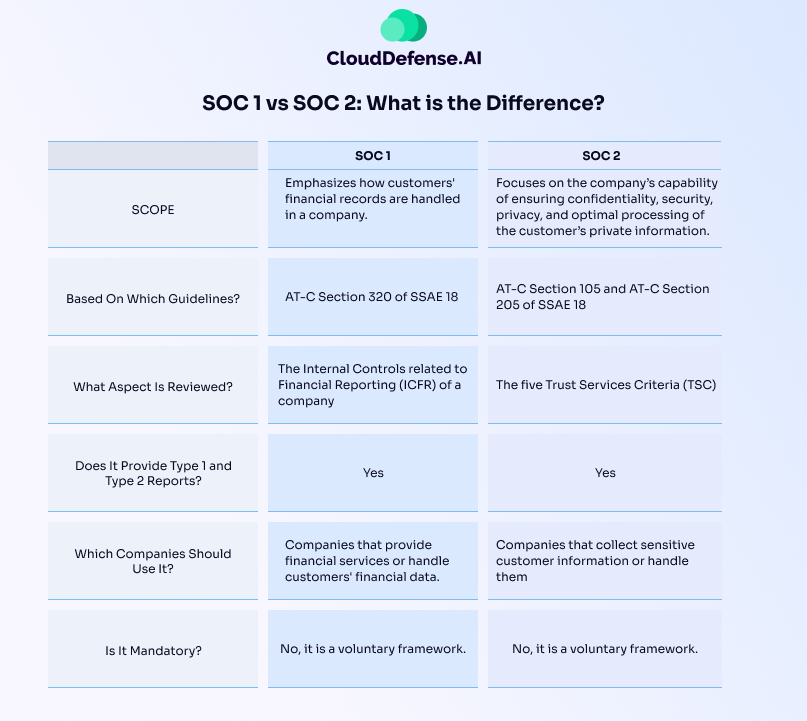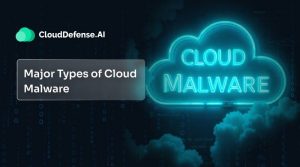Compliance is no longer just another optional item on your checklist; it has become a critical requirement for all companies worldwide. Growth in cloud computing and data breaches around the world have made companies make an effort to build trust among their clientele. SOC compliances play a significant role in earning that trust.
SOC stands for System and Organization Controls, and of the many available SOC suites, SOC 1 and SOC 2 are widely used. However, which one should you choose regarding SOC 1 vs. SOC 2 audits?
A 10-minute read through this article should help you understand the differences between these two SOC suites and which one complements your company better.
So, let’s dive right in!
What Is SOC 1 And SOC 2 Compliance?
SOC 1 and SOC 2 are two different compliance frameworks that assess company assets differently.
What is SOC 1?
SOC 1, which is pronounced as “Sock One,” is a voluntary framework for auditing that was established by the American Institute of Certified Public Accountants (AICPA).
Formerly referred to as SSAE 18, SOC 1 compliance is designed to assess the security measures a company has in place to protect its customers’ financial information and the accuracy at which the information is handled. This particular SOC framework is especially well-suited for service companies that handle and manage financial data.
What is SOC 2?
SOC 2 puts more emphasis on data privacy and security. This audit is carried out on companies that provide data-processing services.
A good example are SaaS providers, data analysis firms, and companies that host data. SOC 2 reports are generated based on a company’s ability to abide by at least one of the five trust services criteria (TSC). The principles of TSC are Availability, security, process integrity, confidentiality, and privacy. SOC 2 audits adhere to Section AT-C 105 and Section AT-C 205 of SSAE 18 guidelines.
What are SOC Controls/Criteria?
AICPA has set several criteria that a company is required to fulfill to be compliant with SOC standards. However, there is still flexibility as to how the company approaches the controls set to meet the requirements of a SOC 2 report. When it comes to SOC 1, control objectives replace criteria. The company detects the controls required to fulfill the objectives, which are then tested during the examination.
For SOC 2, the criteria are the ones we mentioned in its definition. Each criterion is set for different aspects of your InfoSec system required to comply with different Industry standards.
Benefits of SOC Compliance
SOC compliance provides a number of benefits that help in improving the overall security posture, service quality, and operational efficiency. We have outlined some major benefits below:
- Improving Relations With Customers: The primary motive for adhering to SOC compliance is so that your customers trust you with their sensitive personal information. Customers are ensured about the safety of their data when they are presented with SOC reports.
- Enhancing Data Security: SOC audits help you pinpoint any lapse in your organization’s ability to keep data safe. The controls that SOC provides also help in improving your data security posture.
- Boosts Brand Image: When you attain SOC compliance, it helps show your concern for protecting your customer’s data and privacy. This helps position you as a trustworthy service that they would use.
- Compliance: Achieving SOC compliance smooths your path to attaining compliance with other regulatory bodies such as GDPR, HIPAA, and ISO.
SOC 1 vs SOC 2: What is the Difference?
There are some significant differences in how SOC 1 and SOC 2 reports are created based on a company’s data handling. You can rely on the table below for an easy understanding:

Understanding Type 1 and Type 2 SOC reports
Type 1 and 2 SOC reports are vital for assessing a service organization’s internal controls. In the context of SOC 1 and SOC 2, Type 1 reports grant a momentary view into the control system of a company. It focuses on control design at a specific point in time. They allow customers and other partners to receive crucial insights into the structural integrity of controls and their efficiency, reassuring them about your control setup.
Comparatively, Type 2 SOC reports provide a more holistic evaluation of SOC 1 and SOC 2. These reports cover a designated timeframe, ranging from six months to a year, and detail both the design and operational effectiveness of controls. Rigorous control testing featured in Type 2 reports offers a more profound explanation of control functionality over time. Industry partners rely on Type 2 reports to continually judge the dependability and performance of the controls.
When Does Your Organization Need a SOC Audit?
Consider getting a SOC audit for your organization as a way to ensure that your security and controls are in good shape. It’s like giving your business a checkup to make sure everything is running smoothly. You might want a SOC audit if you handle sensitive data or provide services for other companies, as it can build trust with your clients by showing them that you take security seriously.
In some cases, there are legal requirements that make a SOC audit necessary. Even if it’s not mandatory, a SOC audit is a proactive step for internal improvement, helping you identify any weaknesses in your controls, fix them, and gain customer trust.
Think of it as a badge that lets your customers know that you’ve got their priceless data covered.
Simplify your Compliance process with CloudDefense.AI:
If your company is handling sensitive customer data, then it is a must for you to comply with local or International security standards. SOC 2 compliance is a minimum that you can get to build some trust among your clientele. However, it can become a tedious task for your team to keep track of all compliance requirements. That is precisely where CloudDefense.AI comes in.
CloudDefense.AI offers you a state-of-the-art multi-cloud compliance management system that helps you reach your compliance goals easily! This framework empowers you to trace your progress for compliance against various Industry standards through automatic assessment.
It analyses every business resource that you have based on your API metadata and provides you with real-time insight to mark all non-compliant resources. Compare the insights with all the frameworks available to you to pinpoint all compliance aspects that you need to cover – through the platform itself.
Moreover, we allow you to create custom policies to maintain security practices throughout your organization. Use already existing policy templates or create your own to suit your security needs.
We also allow you to create your own custom compliance framework based on existing templates or even from scratch. This gives you all the controls you need to create objectives based on your organization’s standards.
Generate real-time reports for your security team and summaries for top-level executives in one click. Audit reports are available in PDF format that outlines any violations and the improvements you can consider to reach your goals faster.
By providing support for 20+ compliance frameworks, we not only help you with SOC 2 but also GDPR, HIPAA, CCPA, ISO, PCI, etc. The icing on the cake is YOUR ability to achieve all these perks and a lot more from a single dashboard!
FAQ
Here are a few queries that people have regarding SOC 1 and SOC 2 compliance.
Are SOC reports mandatory for all businesses?
SOC reports are not mandatory, but it is certainly a proactive move to get them. SOC reports are the minimum you can do in your journey of becoming compliant with industry security standards.
How often should SOC reports be updated?
SOC reports should be updated at least once every 12 months. This rule applies to both Type 1 and Type 2 reports.
Does SOC 2 Type 2 include Type 1?
No, SOC 2 Type 2 and Type 1 are different from each other in terms of their assessment period. SOC 2 Type 1 checks security controls at a point in time; on the other hand, SOC 2 Type 2 assesses security controls over a longer period of 6-12 months.
Do SOC reports guarantee 100% security and compliance?
No, SOC reports do not provide a 100% guarantee of security and compliance. They are voluntary auditing frameworks that provide you with an understanding of how effective your security controls are.
Conclusion
SOC 1 and SOC 2 compliance come as two basic security standards that people choose to kickstart their compliance journey. However, before engaging in a SOC 1 vs. SOC 2 debate to choose one for your company, it is essential to understand that they both serve different purposes and clientele.
We know that attaining complete compliance is no different than hiking to the top of Mt. Everest for you. CloudDefense.AI cannot help you hike Mt. Everest, but it can surely help you on your mountainous journey to achieving compliance goals.
Schedule a complimentary demo to test out how CloudDefense.AI streamlines your path to not just SOC 2 compliance but 20+ other compliance frameworks!







